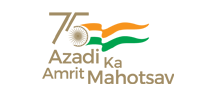Examination
SCOPE: These regulations shall be applicable for the B.D.S. degree examinations conducted by various universities in the country.
- (A) Evaluation is a continuous process, which is based upon criteria developed by the concerned authorities with certain objectives to assess the performance of the learner. This also indirectly helps in the measurement of effectiveness and quality of the concerned.
- B.D.S. programme.
- (B) Evaluation is achieved by two processes
1. Formative or internal assessment
2. Summative or university examinations.
Formative evaluation is done through a series of tests and examinations conducted periodically by the institution. Summative evaluation is done by the university through examination conducted at the end of the specified course.
METHODS OF EVALUATION:
Evaluation may be achieved by the following tested methods:
1. Written test
2. Practicals
3. Clinical examination
4. Viva voce
INTERNAL ASSESSMENT EXAMINATION: The continuing assessment examinations may be held frequently at least 3 times in a particular year and the average marks of these examinations should be considered. 10% of the total marks in each subject for both theory, practical and clinical examination separately should be set aside for the internal assessment examinations.
SCHEME OF EXAMINATION:
The examination shall be open to a candidate who satisfies the requirements of attendance, progress and other rules laid down by the University.
I B.D.S. Examination:
1. General anatomy including embryology and histology
2. General human physiology and biochemistry
3. Dental Anatomy, Embryology and Oral Histology.
Any student who does not clear the BDS Course in all the subjects within a period of 9 years, including one year Compulsory Rotatory paid Internship from the date of admission shall be discharged from the course.
II B.D.S. Examination:
A candidate who has not successfully completed the 1st B.D.S. examination can not appear in the IInd year Examination.
1. General pathology and Microbiology
2. General and dental pharmacology and therapeutics
3. Dental Materials
4. Pre Clinical Conservative – Only Practical and Viva Voce
5. Pre Clinical Prosthodontics – Only Practical and Viva Voce
III B.D.S. Examination: A candidate who has successfully completed the 2nd B.D.S. examination can appear IIIrd B.D.S. Examination.
1. General Medicine
2. General Surgery
3. Oral Pathology and Oral Microbiology
Final BDS (Fourth Year):
Public Health Destistry
Periodontology
Orthodontics and Dentofacial Orthopaetic
Oral Medicine and Radiology
Oral & Maxillofacial Surgery
Conservative and Endodontics
Prosthodontics and Crown & Bridge
Paediatric and Preventive Dentistry.
WRITTEN EXAMINATION:
The written examination in each subject shall consist of one paper of three hours duration and shall have maximum marks of 70.
In the subjects of Physiology & Biochemistry and Pathology & Microbiology each paper will be divided into two parts, A and B of equal marks.
The question paper should contain different types of questions like essay, short answer and objective type / M.C.Q’s.
The nature of questions set, should be aimed to evaluate students of different standards ranging from average to excellent.
The questions should cover as broad an area of the content of the course.
The essay questions should be properly structured and the marks specifically allotted.
The University may set up a question bank
PRACTICAL AND CLINICAL EXAMINATION:
Objective Structured Clinical Evaluation
Records/ Log Books: The candidate should be given credit for his records based on the scores obtained in the record. The marks obtained for the record in the first appearance can be carried over to the subsequent appearances if necessary.
Scheme of clinical and practical examinations: The specific scheme of clinical and practical examinations, the type of clinical procedures/ experiments to be performed and marks allotted for each are to be discussed and finalized by the Chairman and other examiners and it is to be published prior to the conduct of the examinations along with the publication of the time table for the practical examinations.
Viva Voce:






